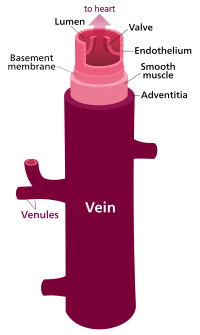
Photo from wikipedia
Novel brominated flame retardants (NBFRs) have been widely used and frequently detected in various environmental matrices. In this study, 2-ethylhexyl-2,3,4,5-tetrabromobenzoate (TBB), bis-(2-ethylhexyl) tetrabromophthalate (TBPH) and their metabolites (namely 2,3,4,5-tetra-bromo benzoic… Click to show full abstract
Novel brominated flame retardants (NBFRs) have been widely used and frequently detected in various environmental matrices. In this study, 2-ethylhexyl-2,3,4,5-tetrabromobenzoate (TBB), bis-(2-ethylhexyl) tetrabromophthalate (TBPH) and their metabolites (namely 2,3,4,5-tetra-bromo benzoic acid (TBBA) and mono(2-ethylhexyl) tetrabromophthalate (TBMEHP)) were exposed to human umbilical vein endothelial cells (HUVECs). Metabolites can induce stronger cytotoxicity than parent compounds with EC50 at 47.3 (TBBA), 8.6 μg/ml (TBMEHP) vs > 200 μg/mL for parent compounds. Gene expression of platelet endothelial cell adhesion molecule-1, the gene associated with blood platelet kinetics, was significantly induced under TBBA and TBMEHP exposure. The in vivo test was consistent with gene expression result that the number of platelets in mouse blood was significantly increased after gavaged with 0.8 μg/mL TBBA and TBMEHP. In addition, TBB or TBPH were exposed to mice via gavage, and higher concentrations of TBBA (4 h, 60.8 ± 12.9 ng/mL, 8 h, 69.4 ± 2.24 ng/mL) in mouse blood were found than those of TBMEHP (4 h, 17.2 ± 4.01 ng/mL, 8 h, 12.8 ± 3.20 ng/mL), indicating that TBB was more readily in vivo metabolized than TBPH. The in vivo metabolism of TBB and TBPH and the stronger toxicity of their metabolites underscore the potential risk through NBFR exposure and the importance of understanding NBFR metabolism process.
Journal Title: Chemosphere
Year Published: 2020
Link to full text (if available)
Share on Social Media: Sign Up to like & get
recommendations!